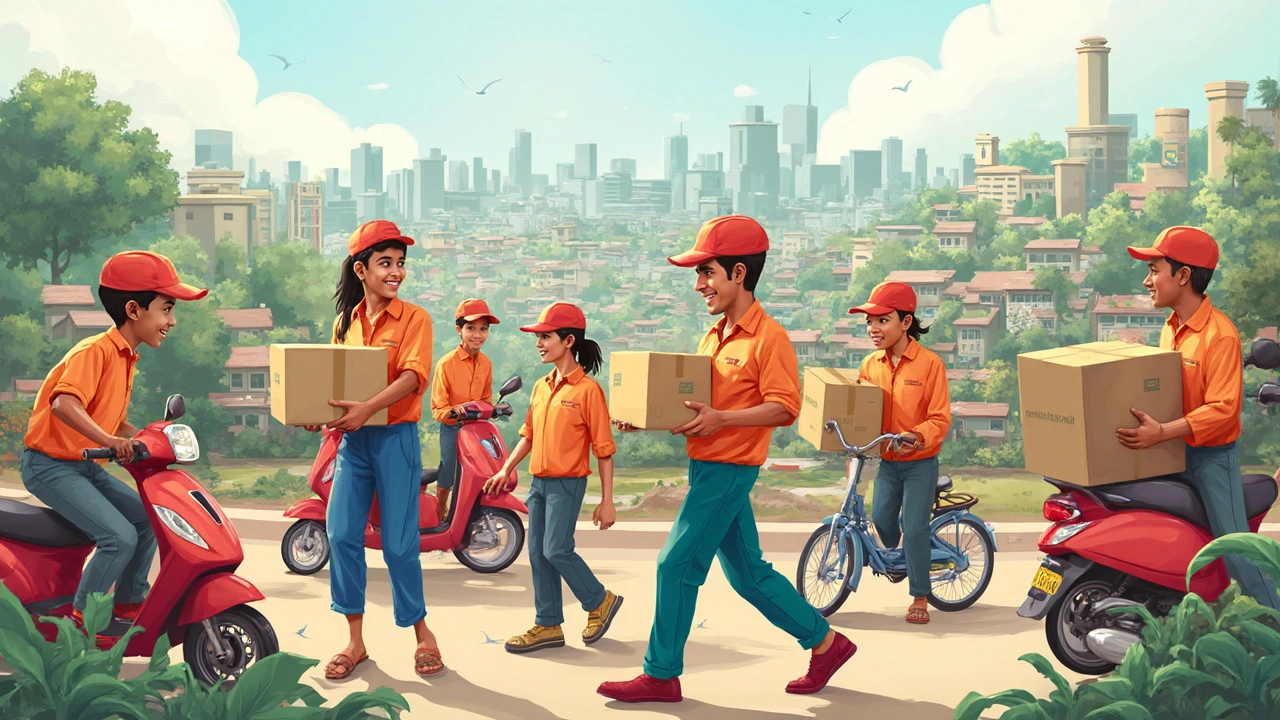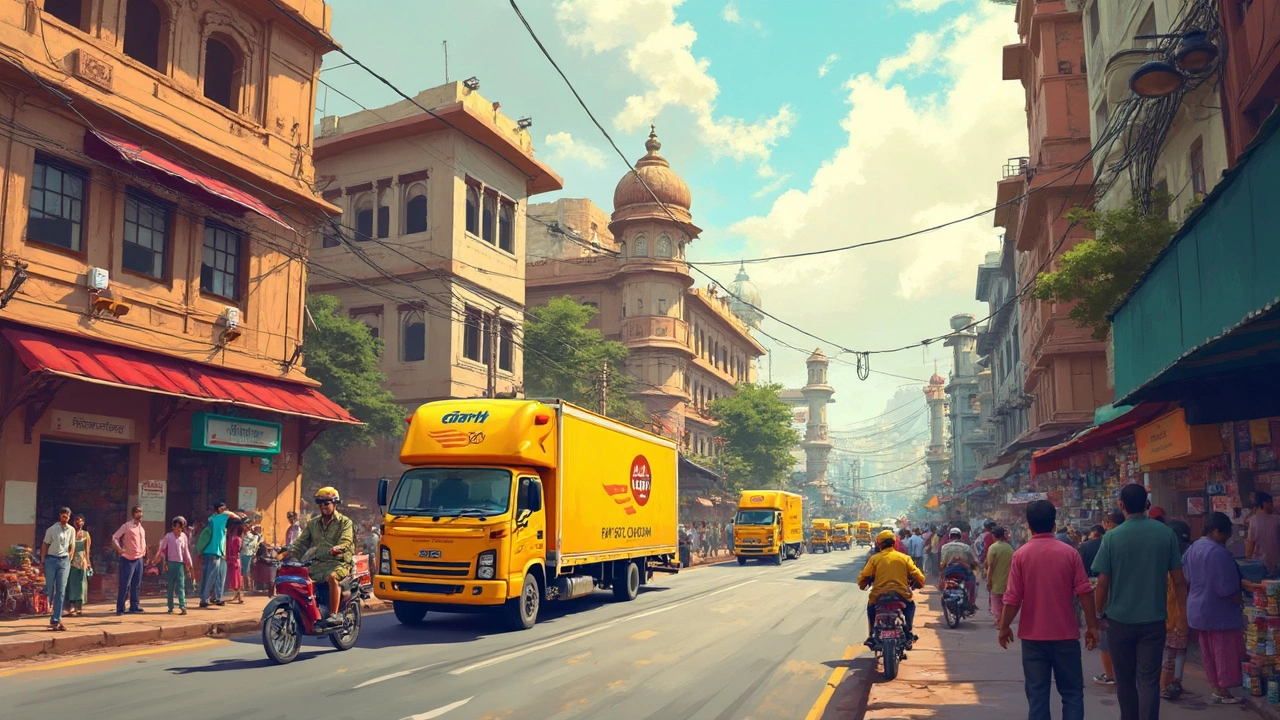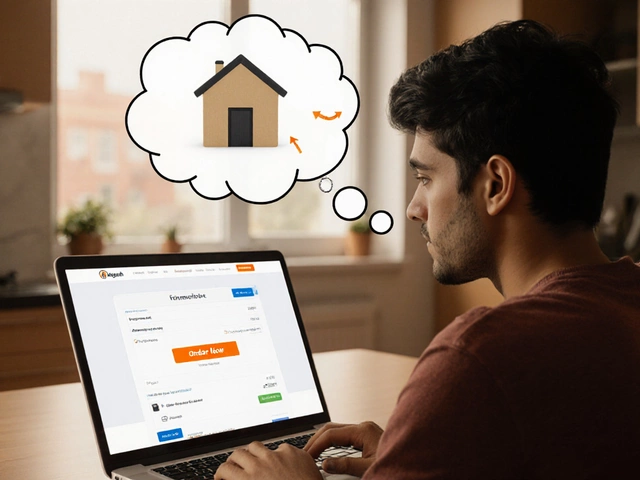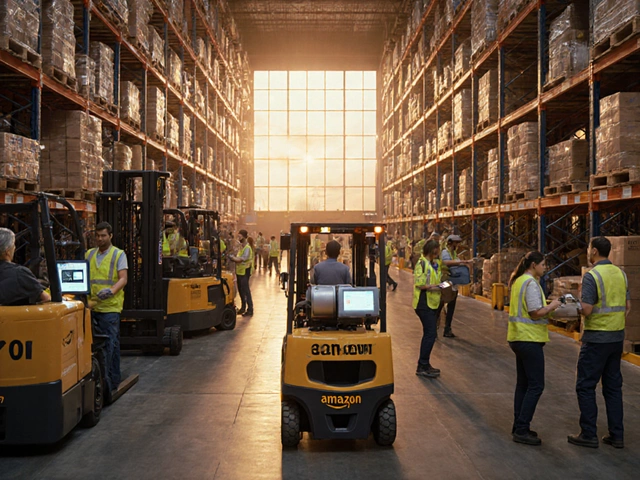Ever ordered something and needed it, like, yesterday? Then express delivery is your hero. It's that service that gets parcels to your door in record time, whether it's a last-minute gift or essentials you forgot to pick up. But what does it really mean when someone says 'express delivery'?
In simple terms, express delivery is all about speed. It's designed to get packages from point A to point B faster than regular delivery services. We're talking about same-day or next-day shipping, where the clock is ticking, and the logistics teams are racing to meet deadlines. In a world where waiting more than two days feels like forever, express delivery makes instant gratification a reality.
Of course, with speed comes a few twists. Not all express services are created equal — some might cover urban areas more efficiently than rural spots, while others specialize in international shipping. So, it's good to know the ins and outs before hitting that order button.
- Understanding Express Delivery
- How Express Delivery Works
- Benefits of Fast Shipping
- Challenges in Express Logistics
- Tips for Using Express Delivery Services
Understanding Express Delivery
Let's break down express delivery, the term we all hear but might not fully grasp. Essentially, it's a shipping method that prioritizes speed over everything else. Think of it as the fast lane of package deliveries, designed for those high-priority shipments that just can't wait.
Fast shipping isn't new, but it's evolved significantly in recent years. Back in the day, an express trail was a standout offering, but now, companies are competing to cut delivery times to mere hours. According to a report by the International Post Corporation:
"Customers are increasingly demanding faster and more reliable delivery options, with 80% preferring same-day delivery for urgent shipments."
How Express Delivery Works
Behind that promise of speed lies an intricate network of logistics and technology. At the core, it's about optimizing the shipping route, reducing handling times, and often involves air transport for long distances. The success of express delivery depends heavily on efficient logistics and a tight-knit communication network among different warehouses and carriers.
Express delivery services also rely on a hub-and-spoke model, where regional hubs are set up to quickly distribute packages to their final destinations. This system cuts down transit times and makes it possible to maintain consistency, even with high volume demands.
Key Players in Express Delivery
A few major players dominate the express logistics landscape. Companies like FedEx, UPS, and DHL have set industry standards with their global networks. They've mastered the art of moving parcels swiftly, and as a result, most of us have come to expect nothing less than speedy service.
- FedEx operates one of the world's largest cargo fleets to ensure prompt delivery across the globe.
- UPS uses advanced tracking systems that offer real-time updates for customers.
- DHL's optimized network covers over 220 countries and territories.
Ultimately, the goal of express delivery is simple: meet and exceed customer expectations by delivering parcels with speed and accuracy. It's a service that keeps the world connected, making distance a minor detail rather than a major hurdle.
How Express Delivery Works
Behind every package that shows up at your doorstep in a flash is a well-oiled machine of logistics and planning. So, how does express delivery actually pull it off?
Step 1: Order Processing
Once you place an order for fast shipping, the clock starts ticking. Retailers use software to immediately process orders and determine which warehouse or store is closest to you. The aim is to minimize travel time from the get-go.
Step 2: Efficient Packing
In express logistics, time is money. Warehouses often have dedicated teams working around the clock to ensure that items are packed and ready for dispatch quickly. Automated systems sometimes assist in picking and packing to make the process even faster.
Step 3: Swift Transport
The heart of express delivery is rapid transport. Couriers might use planes, trucks, bikes, or even foot couriers, depending on what's most efficient for the route. Some companies even use advanced routing algorithms to find the fastest paths, avoiding traffic and delays.
Step 4: Tracking and Updates
Customers love knowing where their packages are. E-commerce platforms provide real-time tracking updates, giving customers minute-by-minute insights into where their package is on its journey. These updates help manage expectations and ensure a smooth experience.
Step 5: Final Delivery
The last mile is often the most challenging part due to traffic and urban congestion. Companies tackle this with technology, or by hiring local delivery partners. In some places, you even see drones being tested for the final delivery leg.
Want some stats? On average, a well-coordinated express delivery service can process and deliver a package within 24 hours in a city. However, the time frame might stretch in rural areas or due to unforeseen circumstances.
So, next time you're waiting for that parcel to show up in a blink, remember the whirlwind of activity happening behind the scenes!

Benefits of Fast Shipping
There's something incredibly satisfying about quick service, especially when it comes to fast shipping. Imagine needing an outfit for a last-minute event or realizing you've run out of an essential item just hours before you need it. Fast shipping swoops in to save the day, but it offers much more than just a quick fix.
Convenience at Your Fingertips
Let's start with convenience. With express delivery, you can order something from the comfort of your couch and have it at your doorstep before you know it. This can be a game changer for busy people juggling work, family, and social commitments.
Improved Customer Satisfaction
Retailers leveraging express delivery often see happier customers. It's all about meeting the expectations of those wanting prompt service. A quick turnaround time can boost a retailer's reputation and encourage repeat business.
Competitive Edge for Businesses
In the bustling world of e-commerce, offering fast shipping gives businesses a head start. Having the edge over competitors with speedier service can make all the difference in gaining and keeping customers.
Supports Urgent Needs
Sometimes, it's more than just desire—it’s a necessity. Fast shipping is crucial for emergencies, such as time-sensitive medications or efficient business logistics. Being able to rely on quick delivery ensures critical items aren't delayed.
Flexibility and Options
Having express delivery options provides a range of choices for customers, whether it's next-day delivery or even same-day service. This flexibility means people can choose what suits their current lifestyle and needs.
| Shipping Option | Delivery Speed |
|---|---|
| Standard Shipping | 3-5 Business Days |
| Express Shipping | 1-2 Business Days |
| Same-Day Delivery | Within Hours |
In conclusion, fast shipping isn't just a luxury—it's fast becoming a necessity in our on-demand world. The benefits are clear: convenience, improved satisfaction, a competitive edge, support in emergencies, and flexible options make it a compelling choice for many.
Challenges in Express Logistics
While getting a package fast is fantastic, the behind-the-scenes work to make it happen can be pretty intense. Logistics teams face numerous hurdles to ensure express delivery smoothness.
Handling High Demand
First off, there's the crazy demand. Ever wonder why during the holiday season your deliveries seem to take ages? It's because the volume skyrockets, making it a real trick to manage. Companies need to scale their operations quickly to keep up with the demand for fast shipping.
Route Optimization
Then comes route optimization. Delivery drivers and logistics operators have to figure out the most efficient paths to hit all destinations on time. It’s not just about speed; it’s about avoiding traffic, predicting weather conditions, and managing time efficiently. This is where tech comes in handy with GPS and advanced algorithms.
Cost Management
Let’s not forget the costs. Fast pacing usually means it’s pricier, and companies must balance expenses. Investing in technology, vehicles, and manpower adds up, and those costs can trickle down to you.
Meeting Expectations
Lastly, consumer expectations are through the roof. People expect their parcels now, and even a minor delay can cause a ripple effect of frustration and lost business. Companies in the same-day delivery market have to keep promises and handle unexpected delays like pros.
| Challenge | Impact |
|---|---|
| High Demand | Causes slower processing, potential delays. |
| Route Optimization | Increases efficiency but requires technology. |
| Cost Management | High expenses can affect pricing. |
| Meeting Expectations | Crucial for consumer satisfaction. |
When you think about all these elements, it's impressive how express services pull it off, making sure your package gets to your door quicker than you imagine.

Tips for Using Express Delivery Services
When it comes to express delivery, a few smart moves can make the experience even better. Let's break down some tips to get the most out of your fast shipping.
1. Double-Check Delivery Times
Always verify the estimated delivery time provided by the seller. Some services promise same-day delivery, but that can depend on the time of your order and the location. It’s not a bad idea to check if there's a specific cutoff time for placing orders.
2. Consider the Cost
Express delivery usually comes with a higher price tag. Weigh your need for speed against the cost. If you’re not in a rush, opting for a standard service could save you some cash. But if you need it in a hurry, the extra expense might be well worth it.
3. Use Tracking Tools
Most fast shipping services offer real-time tracking, which is perfect for those of us who like to monitor our packages. It's reassuring to know exactly where your parcel is and when it’s expected to arrive. Keep an eye on the updates for any unexpected delays or changes.
4. Choose Reliable Providers
Not all express services are equal. Some companies are known for their speed and reliability, others not so much. Do a bit of research and maybe read some customer reviews before you decide who gets that delivery job. Trustworthy services tend to have better customer support, too.
5. Prepare for Delivery
To make the delivery process smoother, ensure someone is available to sign for the package, or arrange for a safe drop-off point. If you’re not home, many companies have options for specifying where to leave the package securely.
| Service | Approximate Cost | Delivery Time |
|---|---|---|
| Standard | $5-10 | 3-5 days |
| Express | $15-25 | 1-2 days |
These tips should help you navigate the sometimes-hectic world of express delivery. Remember, while speedy shipping can be convenient, it's always best to go in with all the info you need.





